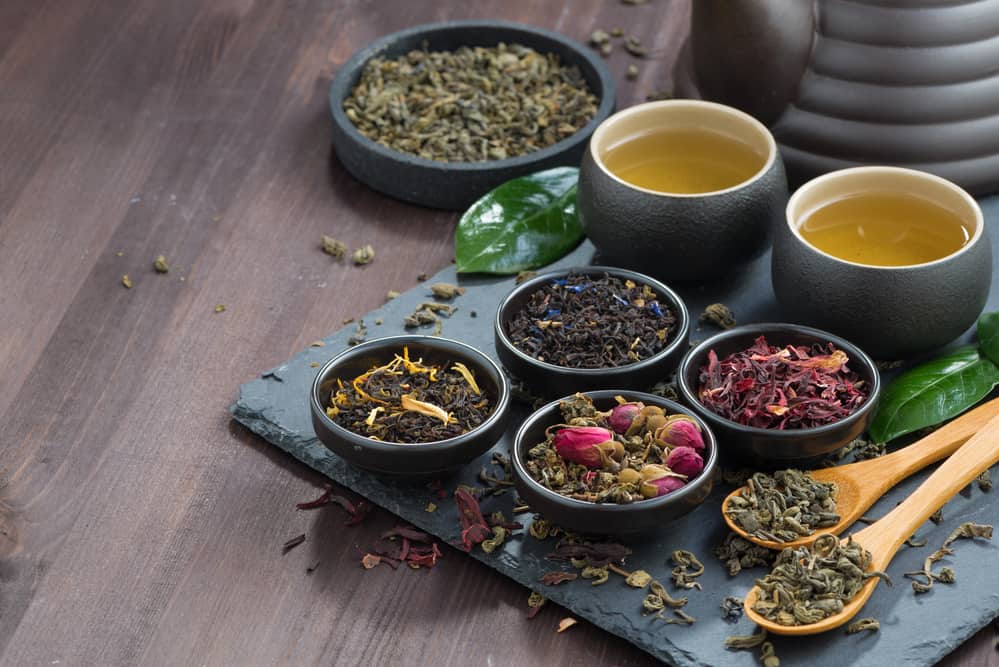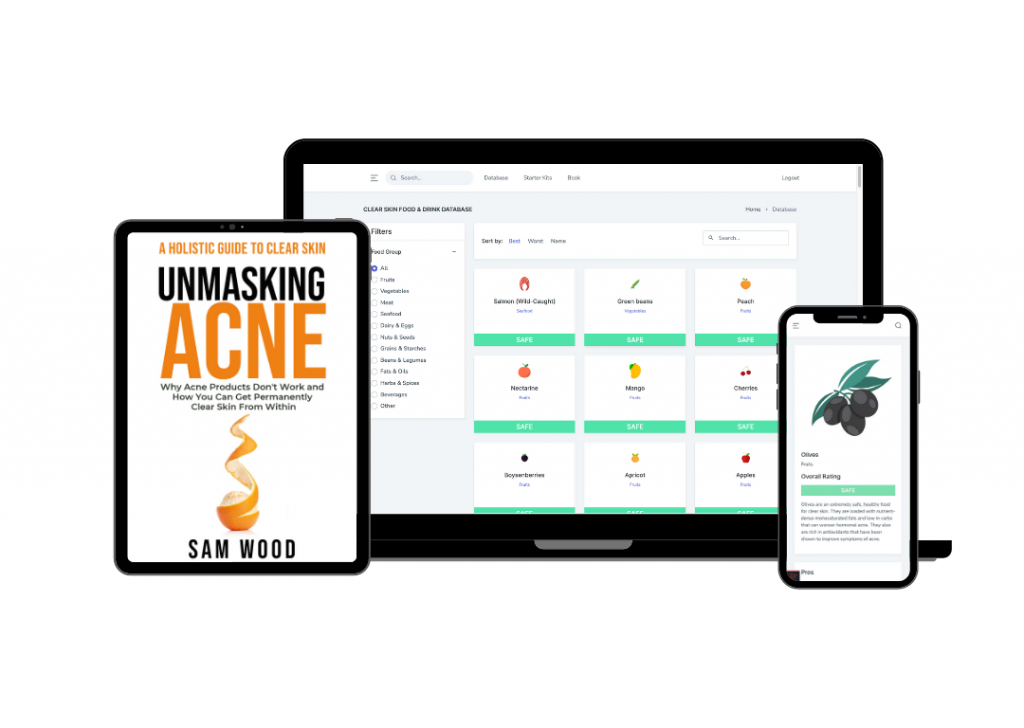It shouldn’t be a surprise that acne is the most common chronic inflammatory skin disorder in the United States. Acne impacts up to 62 million Americans each year.
Acne affects approximately 85 percent of the population between the ages of 12 and 24. At times, our pores can become clogged, resulting in the formation of pimples and zits.
It also causes spots on the face, neck, chest, and shoulders, among other places. Acne is most common in preteens and teens during puberty, but it can affect anyone at any age.
While it’s not ordinarily harmful to one’s health, it can be unpleasant in a number of ways. It leaves scars in the affected areas and lowers a person’s self-esteem.
If not treated promptly, it can cause physical scarring that may be permanent. Acne manifests itself in several different forms, including whiteheads, pimples, cysts, and nodules.
10 Need To Know Acne Statistics
Following the interminable nature of acne and its commonality can be challenging. To better understand who acne affects the most, check out the list below:
- Most acne goes away by age 30 but can persist into the 50s (R)
- Acne affects up to 50 million Americans annually (R)
- It’s common for acne to worsen up to one week prior to your period (R)
- People affected by acne the most are between ages 11-30 years old (R)
- Those who suffer from acne, also sometimes suffer from depression (R)
- Acne Vulgaris is the most common type of acne, reaching 99% of all cases (R)
- 99% of breakouts occur on the face, while 60% also experience it on the back and butt (R)
- Transgender patients pose a raised risk for acne from 6.3% to 31.1% following MHT (R)
- Over the past 10 years, the average age of an acne sufferer has increased from 20.5 years old to 26.5 years old. (R)
- Ethnicities likely to experience acne the most in order: Black, Asian, White, Continental Indian, Hispanic (R)
Knowing these statistics can help you understand how predisposed you are to acne, and when to begin treatment. Depending on your age, ethnicity, and gender, you may need to focus on distinct treatment options, presented further in the article.
5 Most Common Reasons for Acne
1: Excessive Sebum
The utmost largest organ in the body is the skin, which is made up of many glands. Sebaceous glands, for example, are oil-producing glands that keep skin from drying.
These glands create sebum, an oily liquid that serves to lubricate the skin. Pores, which are tiny openings on the skin’s surface, are plentiful. They serve as the initial point for a follicle.
Hair and sebaceous (oil-producing) glands make up the follicle. Sebum is then distributed onto the skin via the hair that grows from the skin’s follicles.
These pores may become clogged as a consequence of excessive oil, dead skin, or bacteria. Pimples, for example, typically occur when bacteria grow in a clogged pore.
Important Statistic: Excessive sebum can be caused by a variety of factors, such as inflammation, bacteria, hyperplasia, and sebaceous adenoma. (R)
2: Hormonal Factors
Various factors cause acne, but an increase in androgen levels is thought to be the primary cause. Androgen is a hormone that stimulates the sebaceous gland.
Its concentrations rise during puberty. More sebum is produced as a result of increased stimulation of the sebaceous glands.
Excess sebum weakens the protective cellular walls in the pores, allowing bacteria to enter. Acne is prompted by plugged pores and bacteria, as earlier stated.
Furthermore, many women experience hormonal shifts that cause acne breakouts at various stages of their lives.
For example, hormonal changes cause acne a week or so before periods. Pregnancy, perimenopause, and menopause are other usual times when acne flares up due to hormones.
Important Statistic: Thyroid Malfunction, pre-menstrual syndrome, menopause, obesity, diabetes, and androgen hormones can cause a hormone imbalance. These are most common in older ages, although teenagers are more likely to experience acne due to an uproar in hormones. (R)
3: Menstruation
Acne breakouts during periods differ from other hormonal breakouts in that they occur either before or during your period.
PMS, or premenstrual syndrome, occurs when the female body’s estrogen and progesterone levels fall.
Reduced levels of these two hormones stimulate sebaceous glands, resulting in excessive sebum production. Sebum clogs the pores and causes pimples to form.
A change in hormone balance during this stage may also increase skin inflammation and acne production, resulting in bacteria.
Hormone levels shift once more near the end of the menstrual cycle.
Testosterone, a male-dominant hormone found in low levels in females, stimulates the sebaceous glands, increasing sebum production.
Important Statistic: Menstrual acne flares occur in up to 63% of those prone to acne, occurring at an average of 10 days prior to the period. This is largely due to an imbalance of the hormones estrogen and progesterone dropping, while testosterone remains still. (R)
4: Stress and Medications

According to recent research, while stress does not directly cause acne breakouts, it can worsen existing skin problems such as acne.
So, while stress is unlikely to cause acne if you don’t already have it, it can aggravate an existing case.
Sebum is an oily liquid secreted by sebaceous glands; excessive production can clog hair-producing follicles, resulting in pimples.
Researchers have found that sebum contains receptors for stress hormones. Excessive stress induces a rise in sebum production, which leads to more acne breakouts.
Certain medications have an effect on hormone levels and can cause or aggravate acne.
Acne or acne-like eruptions can be caused by medications such as anticonvulsants, corticosteroids, and other steroids.
Important Statistic: Medications such as EGFR inhibitors, Lithium, Corticosteroids, and Halogens are most likely to cause acne. Acne caused by medication can happen at any age, unlike regular acne, which most commonly occurs between ages 11-30 years old. (R)
5: Diet
According to recent studies conducted by researchers, people who eat a diet rich in sugar and carbohydrates are more likely to develop acne.
Carbohydrates are swiftly absorbed into the bloodstream, provoking blood sugar levels to rise immediately.
When blood sugar levels rise, insulin levels rise, making blood sugar available to your cells by moving it from the bloodstream all the way to the cells.
An increase in insulin levels can cause problems because too much insulin is bad for acne.
Insulin increases the activity of androgen hormones, which causes the sebaceous glands to produce more sebum.
Since dairy products and chocolate contain a high-fat content, they may also cause acne.
Important Statistic: Food that is most likely to induce acne include: Dairy, fatty food, chocolate, fatty acids (especially omega 6 fatty acid), and GI/GL foods. (R)
3 People Most at Risk for Acne
1: Those with Poor Skin Care

The skin is the human body’s largest organ. While you are working outside, it’s exposed to the sun, dust, and pollution all day.
Following a lengthy day at work, you may notice that your skin grows greasy and sticky as a result of all the dirt and germs it has absorbed.
As a consequence, washing and keeping the skin clean is critical to preventing acne, and those who neglect to do so are at risk.
The longer you go without cleaning up, the more time bacteria has to stay on your skin and block pores as the environment becomes more favorable to them.
Cell phones, pillowcases, and towels are just a few examples of household items that aggravate facial acne.
2: Unlucky Genetics
Genetics plays a critical role in determining a person’s chances of developing a specific condition.
For example, if someone in your family tree has a history of acne, there’s a good chance you’ll get it as well. Acne risk is influenced and increased by genetics in both teen and adult acne.
The type of skin you have and how much oil your skin produces determine whether or not you will get acne, as too much oil is bad for your skin and can clog your pores.
Your genetics will determine the type of skin you have. Unfortunately, there is little that can be done about this factor, but it can be counteracted.
3: Your Age
Acne can afflict people of all ages, including adults and adolescents. However, it has been observed that teenagers are at a high risk of developing acne due to a variety of factors.
Acne is primarily caused by an excess of oil in the skin’s pores.
Because hormones stimulate oil glands at their most active point during puberty, people are more likely to develop acne in their teens.
During their teenage years, their bodies begin to produce an enormous amount of androgens. Androgens (like testosterone) are sex hormones that stimulate the production of oil on the skin.
Excessive oil production contributes to clogging and blocking skin pores, resulting in acne in teenagers.
3 Most Successful Methods Used To Fight Acne
1: Natural Supplements

Green Tea
Evidence-based studies have shown that green tea contains polyphenols and that applying it to the affected area can help treat acne. What’s more, it may help to reduce sebum production.
Tea Tree Oil
Melaleuca alternifolia is a plant used to treat acne. Tea tree oil is derived from the tree’s leaves. It has a well-known ability to fight bacteria and reduce skin inflammation.
Moisturize with Aloe Vera
Aloe vera is a large-leaved tropical plant. Inside these leaves is a clear gel. This gel is antiseptic, and it has been shown to help fight bacteria, reduce inflammation, and promote wound healing. Because of these properties, it’s commonly used to treat a variety of skin conditions.
2: Changing Your Lifestyle
Control Stress
One of the major factors that causes acne and worsens pre-existing skin problems is stress. Controlling stress also controls sebum production because the more stressed you are, the higher your cortisol levels in the body and the more prolific your sebaceous glands in the skin are.
Exercise
Most acne sufferers refrain from exercising because they believe that sweating aggravates their condition. Contrary to this belief, exercise keeps you healthy and can help unclog your pores by making you sweat. Just make sure to wash up before the sweat has an opportunity to dry.
Don’t Touch
When you touch or poke your pimples, you introduce new bacteria into the area. Plus, touching the pimple may cause it to pop, allowing bacteria to spread, causing inflammation and soreness.
3: Diet
Food
There are various foods that contain beneficial properties that may aid in the reduction and prevention of inflammation. Apples, broccoli, squash and lean white meats can be beneficial.
Drink Lots of Water
Water is the most fundamental and essential component of life. It’s required for all body organs to function properly, including the liver, which controls hormone production. Hormones also play an important role in acne by increasing sebum production.
Avoid Sugar
Avoid foods with a high sugar content because sugar converts to insulin and higher insulin levels activate more sebaceous glands.
When to See a Dermatologist
1: You’ve Never Been Diagnosed with Acne Before

Different skin conditions can have the same effect or appear similar in action, so it’s important to get the correct examination as soon as feasible.
If you notice red bumps on your face, chest, shoulders, back, or anywhere else and are unsure what they are, it’s best to consult a dermatologist.
Some conditions like Rosacea and folliculitis look and appear similar to acne.
As a consequence, if you are uncertain whether the red spots on your face are acne, have them checked. You can defend your skin from additional damage if you treat it on time.
Furthermore, acne can be controlled with less medication and effort at this early stage.
2: Your Acne Is Getting Worse
Acne is classified into several types, and mild cases of acne can be easily treated with a variety of treatment plans.
For example, your dermatologist may prescribe ointments, oral medications, and over-the-counter acne medications.
Acne is a treatable problem if addressed at the right time and treated promptly. However, your body may not always respond well to over-the-counter treatments, so keep this in mind.
In that case, you should consult with your doctor again and have your treatment plan revised.
Your doctor can guide you on how long you should try over-the-counter acne treatments before moving on to other options.
Typically, products are given for 10 to 12 weeks or approximately three months. Improvement is expected after this period. If they do not work, the dermatologist may change the treatment plan.
3: You Have Moderate To Severe Inflammatory Acne
Many over-the-counter medications are used to treat mild acne. However, if your acne is moderate to severe or very inflamed, over-the-counter products will not work as well.
This is because they are simply not strong enough to improve or treat acne of this severity. If you continue to use such products to treat your acne, you will be wasting your money and time.
Nodules and cysts are considered the worst form of acne, so make sure to be evaluated by a professional if you experience either of these.
These blemishes can cause permanent physical scarring and must be treated as soon as possible.
Takeaway
Acne is a common skin condition. Countless people are affected by it worldwide. Fortunately, it’s not a life-threatening situation, but acne can cause severe pain and discomfort.
As a result, it can harm a person’s self-esteem. It’s preventable by keeping your skin clean and incorporating a healthy lifestyle into your daily routine.
There are numerous natural home remedies available. However, in an emergency or if the situation worsens, one should seek medical attention.

